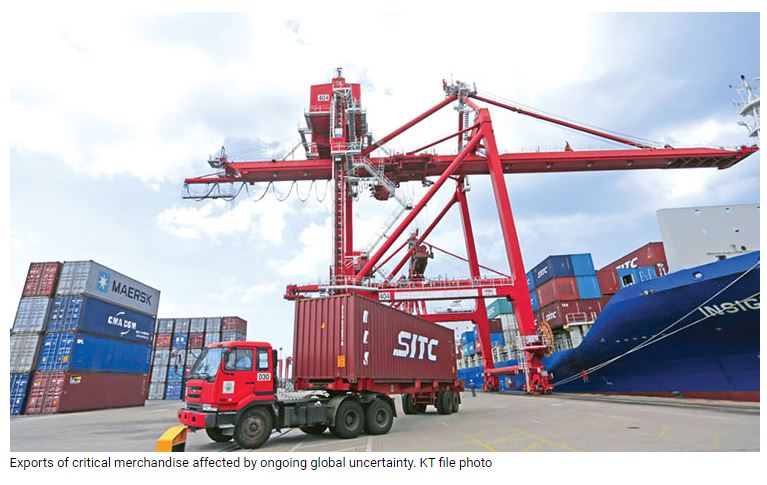Trade pressures on Cambodia
Cambodia’s economic policies are relatively liberal for the region, and its investment and trade regimes remain attractive. However, being a small and open economy, Cambodia is susceptible to external changes and shocks. Global trade growth slowed in the second half of 2022 and further deceleration is projected for 2023. With the global growth outlook appearing gloomy, Cambodia’s economy is facing various challenges. The manufacturing sector – particularly the garment industry – is heavily reliant on export markets, and the economic slowdown in Cambodia’s two primary markets, the United States and Europe, has impacted it badly.
As a country classified as a least developed country (LDC), Cambodia has received several Generalised System of Preferences (GSP) programmes that have provided benefits. Due to the duty-free market access that Cambodia has been granted to various export markets via different trade preference programmes, Cambodia’s trade volume nearly doubled between 2017 and 2021, increasing from $25.44 billion to $48.01 billion. However, due to concerns over human rights and democracy issues in Cambodia, the European Union (EU) reduced approximately 20% of its “Everything but Arms” preferences for Cambodia in August 2020. The United States also suspended its GSP preferences, imposing various economic sanctions on Cambodia, including the “Cambodia Democracy Act” bill, the Magnitsky Act targeting several senior Cambodian leaders, and sanctions on the Union Development Group, a Chinese company operating in Cambodia. These sanctions and suspensions have negatively impacted Cambodia’s trade with the world.
Furthermore, Cambodia’s export potential to regional markets is limited. Only a small portion of total exports go to such markets, and the country’s businesses are as yet not adequately integrated into regional value chains.
Along with the reduction in GSP preferences by the US and EU, Cambodia’s trade activities require optimisation and streamlining. According to the UN’s evaluation in 2021, Cambodia received a score of 78.5% for its trade facilitation, with identified weaknesses being in paperless trade and cross-border paperless trade. Cambodia has not yet implemented an authorised economic operator (AEO) system to streamline cross-border trade. Moreover, the statistics database management system of the General Department of Customs and Excise does not generate timely and precise statistics. Thus, under such dire conditions, the CCFTA is expected to stimulate increased diversification and facilitation of trade, as well as improve institutions and capacity-building for trade promotion and facilitation. From a geopolitical perspective, Cambodia apparently intends to use its relationship with China to mitigate the impact of the economic sanctions imposed by the EU and the US.
Despite the challenges posed by the pandemic, China and Cambodia managed to exceed their bilateral trade volume target by reaching $11.1 billion in 2021, achieving the $10 billion goal two years ahead of schedule. In 2022, China was Cambodia’s largest export market, with exports totalling $1.24 billion, representing 5.5% of Cambodia’s total exports. During the same period, Cambodia’s imports from China amounted to US$10.4 billion, accounting for roughly 34.1% of Cambodia’s total imports. The main products that Cambodia exported to China included milled rice, bananas, mangos, cassava, fishery products, and apparel. Cambodia’s imports from China mainly consisted of raw materials for the garment industry, machinery, vehicles, foodstuffs, electronics, and medicines. Extract from a paper published by ISEAS Perspective and written by Dr Chheang Vannarith, President of Asian Vision Institute.
Source: https://www.khmertimeskh.com/501307802/trade-pressures-on-cambodia/


 English
English




